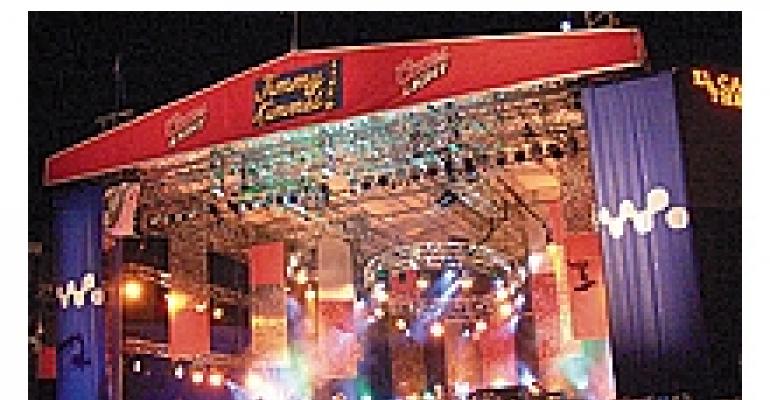
TO make a special event a success, having the right performers onstage is important. But just as important, professional staging suppliers will tell you, is the staging you build to support those performers. The right staging not only adds drama, but also protects against mishaps that could stop the show.
Bill Bunting heads B&K Rentals & Sales in Upper Marlboro, Md., which uses staging from Archbold, Ohio-based Bil-Jax exclusively for an event roster including corporate hospitality golf events, weddings and press platforms. The staging options most in demand, according to Bunting, are ramps to meet Americans with Disabilities Act requirements and tiered stages.
The biggest mistake event planners make when using staging? “Not supporting the stages properly with enough legs and braces,” Bunting says.
STAGE PLIGHT
Indeed, failure to give whomever — or whatever — enough support onstage could mean that the stage collapses. “You don't want to put ¾-inch ply decks with supports on 4-foot centers underneath Elton John or an automobile,” says Bob Hughes, vice president of All Access Staging & Productions of Torrance, Calif. “Most people are willing to spend a bit more for the security and safety of solid footing and talented installers.”

Christina Vicente, director of sales and marketing for Orlando, Fla.-based ASI Production Services, echoes the view that professional installers ensure a professional-quality stage. “Of course, our clients could do it themselves — but why?” she asks. “They have enough on their production plate. Trained personnel have the ability to unload, install and strike staging equipment quickly, safely and economically.”
As an example of the power of professionalism in staging installation, she points to the high-profile MTV Video Music Awards, televised live from Miami on Aug. 28. “This event was memorable for more than a few reasons,” she explains, “one of which was Hurricane Katrina's skirting of the southern tip of Florida. The outdoor staging was installed twice; initially over a seven-day span in the sultry Miami weather and reset after the passing of Katrina in a record-breaking two days.”
SHOWCASING STAGING
The most popular staging option that All Access provides for special events is its modular, 56-foot diameter turntable platform, Hughes says. The unit is composed of concentric circles growing from an 8-foot diameter hub to 24-, 32-, 40-, 48- and 56-foot diameters. “Also available are custom radius decks for surrounding the turntable to effectively ‘submerge’ it to stage level,” Hughes explains.
ASI's most popular staging options for events, Vicente notes, are its multilevel risers for elevated seating — “Not a bad seat in the house,” she says — along with rotating stages, elevated dance platforms, mobile stages “and whatever else an imaginative designer is able to bring to the table.”
To keep up with those imaginative designers, ASI recently invested in additional understructure that provides an even taller staging structure, Vicente says. “Additionally, we have introduced the SL-100 to our inventory of mobile stage units. This model is a 20-by-24-foot stage platform with a load-bearing hydraulic roof. This unit can be transported to the job site via heavy-duty truck, allowing movement in smaller areas yet supporting a 4,800-pound roof load-bearing capacity.” The powerful new staging option is vital, she says, because “event designs are bigger, better and more unique with each passing year.”
“We've had quite a few artists take advantage of utilizing our versatile modular rental systems and augmenting [them] with custom bits and pieces to create their own individual look at a fraction of the price of a custom-built stage,” Hughes notes. “We are always updating, improving and expanding our inventory to meet the demands of our ever-growing clientele.”
RESOURCES
All Access Staging & Productions, 310/784-2462; ASI Production Services, 407/240-8080; B&K Rentals, 301/627-4950; Bil-Jax, 800/537-0540 or 419/445-8915





